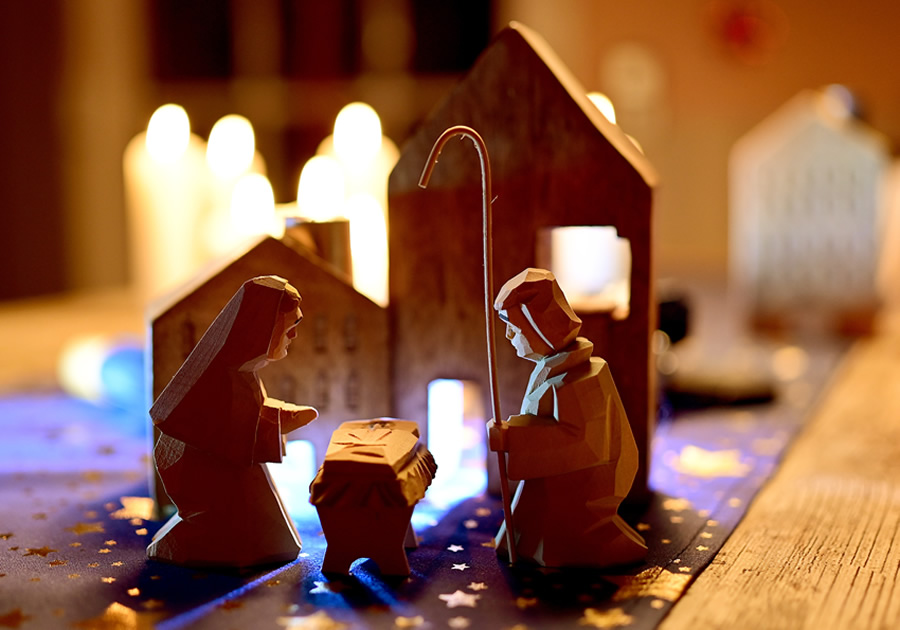
Feast of the Holy Family
12-26-2021Weekly ReflectionBrian Guillot, Director of Faith FormationWe do not know any specifics about Jesus’ childhood or the domestic life of the Holy Family. The stories about the young Jesus found in Luke and Matthew are more concerned with the evangelists’ theological themes than with family life. Luke wanting to show the family as devout Jews with the stories of Jesus’ circumcision, Mary’s purification, and the family traveling to Jerusalem for Passover. Matthew wanting to show the universality of salvation with the story of the Magi, and Jesus as the new Moses with the flight to Egypt and the slaughter of the innocents.
However, we do have a certain understanding of firstcentury Jewish life thanks to Scripture and other sources (e.g., the historian Josephus).
The ideal marriage partner was your first cousin (both Joseph and Mary were from the House of David). The mothers settled the details of the arranged marriage with the fathers taking care of the formal agreement and the dowry. The newlyweds moved into a house built near the groom’s parents. So, a village such as Nazareth consisted of 100 people all related to each other.
Children were raised exclusively by the women of the village—the mothers, aunts, and grand moms—until the age of twelve (adulthood in those days). At twelve, the boys began their training with the men of the village: learning their fathers’ trades and how to be a man. This could explain why neither Joseph nor Mary missed Jesus in Luke 2:41-52, each thinking he was with the other. By thirteen or fourteen, they were married and continuing the process with their own children. Since the women knew all of the children for the first twelve years of their lives, it made sense for them to arrange the marriages. Unfortunately, it was equally true that since the male children came to their male elders late, the older men tended to be less sympathetic towards their individual sons.
While Jesus did not marry, he probably learned to be a craftsman like Joseph. It would explain in part why he moved to Capernaum, a city much larger than Nazareth. Herod was having a summer palace built in Capernaum, so there would be work for skilled laborers such as Jesus. It was also a city located at a crossroads, much more convenient for an itinerant preacher and his followers. The gospel writers unintentionally show the influence of both parents in Jesus’ life. Matthew emphasized Joseph’s role in the birth of Jesus as a man of righteousness by not wanting to subject Mary to scandal and death, and as a man of faith by his willingness to believe the angel in his visions. Luke emphasized Mary’s role as a woman completely open to God’s will.
The Feast of the Holy Family is a good time for us to reflect on how we have influenced our own children. Have we shown them the importance of our faith? Have we shown them how to be people of service? Have we loved them in a way that promotes their loving of others?
BACK TO LIST